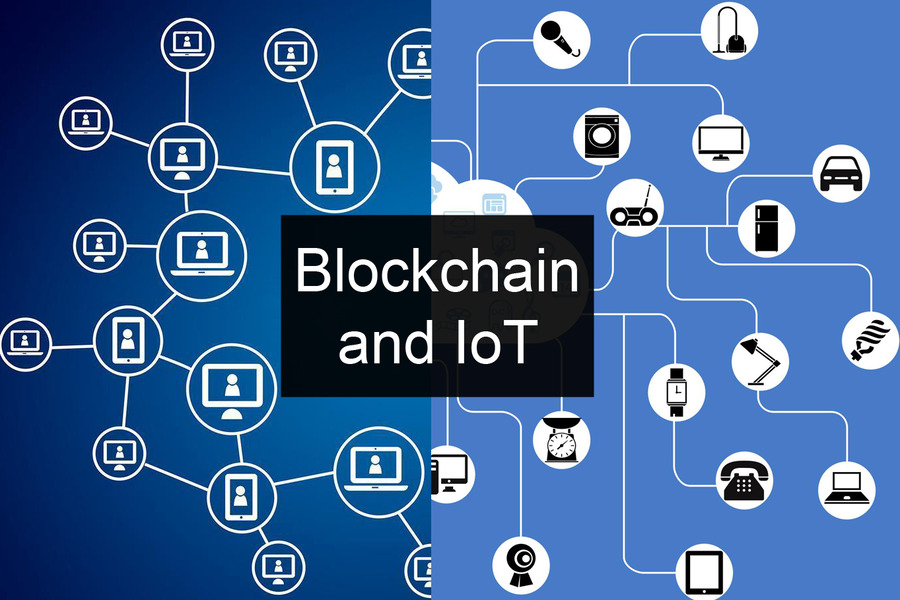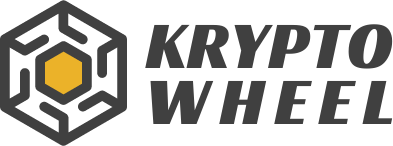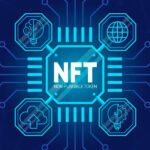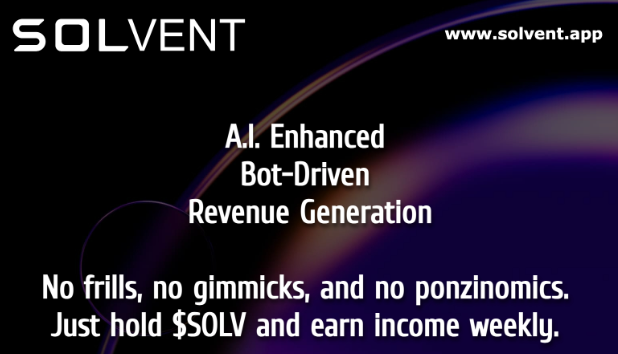
How Blockchain Enhances Security in IoT Applications
- Antwan Koss
- May 20, 2023
- Blockchain
- blockchain, IoT, security, technology
- 0 Comments
In today’s digital age, the Internet of Things (IoT) has become ubiquitous, connecting billions of devices and enabling seamless data exchange. However, the rapid growth of IoT applications has also raised concerns about security vulnerabilities and privacy risks. To address these challenges, blockchain technology has emerged as a powerful solution that enhances security in IoT applications. In this article, we will explore how blockchain can fortify the security of IoT devices and data.
Introduction to IoT and Blockchain
IoT refers to the interconnection of everyday objects, such as smart devices, sensors, and appliances, with the Internet. These interconnected devices collect and share data, enabling automation, efficiency, and convenience in various domains. However, the decentralized nature of IoT networks poses significant security risks, making them susceptible to cyber attacks, data breaches, and unauthorized access.
To mitigate these security concerns, the integration of blockchain technology with IoT applications offers immense potential. Blockchain, originally developed for cryptocurrency transactions, is a decentralized and immutable ledger that ensures transparency, security, and trust in digital transactions. By combining the strengths of blockchain and IoT, organizations can build robust security mechanisms to protect sensitive data and maintain the integrity of their IoT networks.
Understanding IoT Security Challenges
Before delving into the benefits of blockchain for IoT security, it is crucial to understand the existing challenges faced by IoT networks. These challenges include:
- Vulnerabilities of IoT devices: IoT devices often have limited computational resources and are prone to vulnerabilities due to outdated firmware, weak passwords, and insecure communication protocols. Hackers can exploit these weaknesses to gain unauthorized access and control over IoT devices.
- Data privacy and integrity risks: IoT devices generate a massive amount of sensitive data, including personal information and telemetry data. Ensuring the privacy and integrity of this data is critical, as any unauthorized tampering or leakage can have severe consequences.
- Lack of centralized control: Traditional centralized architectures lack the ability to manage and secure a vast number of IoT devices efficiently. Centralized control systems are more susceptible to single points of failure and present a higher risk of data breaches.
- Potential for unauthorized access: The diverse range of IoT devices and their connectivity introduce new attack vectors, allowing hackers to exploit vulnerabilities and gain unauthorized access to critical systems or networks.
Blockchain Technology Overview
Blockchain, at its core, is a distributed ledger technology that enables secure and transparent recording of transactions across multiple parties. Here are some key features and benefits of blockchain:
- Immutable data storage: Once data is recorded on the blockchain, it becomes nearly impossible to modify or tamper with, ensuring data integrity and auditability.
- Identity and access management: Blockchain enables secure identity verification and access control, reducing the risk of unauthorized access to IoT devices and networks.
- Smart contracts for secure transactions: Smart contracts are self-executing contracts with predefined rules and conditions. They facilitate secure and automated transactions, eliminating the need for intermediaries and ensuring trust among parties.
- Auditable and transparent data sharing: Blockchain provides a transparent and auditable record of all transactions, enabling traceability and accountability in IoT ecosystems.
- Decentralized consensus mechanisms: Blockchain networks utilize consensus algorithms to validate transactions and maintain network security without relying on a centralized authority.
Blockchain Solutions for IoT Security

Blockchain technology offers several solutions to enhance the security of IoT applications. These solutions include:
- Immutable data storage: Blockchain’s decentralized and tamper-resistant nature makes it an ideal solution for securely storing IoT-generated data. By storing data on the blockchain, organizations can ensure data integrity and establish an immutable record of device interactions and sensor readings.
- Identity and access management: Blockchain’s identity management capabilities enable secure authentication and authorization of IoT devices. Each device can have a unique identity stored on the blockchain, and access permissions can be managed through smart contracts, reducing the risk of unauthorized access.
- Smart contracts for secure transactions: Smart contracts enable secure and automated transactions between IoT devices or between devices and service providers. These contracts eliminate the need for intermediaries, reducing costs, enhancing efficiency, and ensuring trust in IoT transactions.
- Auditable and transparent data sharing: Blockchain’s transparent and auditable nature allows secure data sharing between multiple parties in an IoT ecosystem. It enables data provenance, ensuring that the origin and history of data can be traced, fostering trust and accountability among stakeholders.
- Decentralized consensus mechanisms: Blockchain networks employ consensus algorithms such as Proof-of-Work (PoW) or Proof-of-Stake (PoS) to validate transactions and maintain network security. Decentralized consensus mechanisms ensure that no single entity can control the network, making it more resilient to attacks.
Challenges and Limitations
While blockchain offers significant benefits for IoT security, there are also challenges and limitations to consider:
- Scalability and performance issues: The scalability of blockchain networks is a crucial consideration when integrating them with IoT applications. Blockchain’s inherent design can lead to performance bottlenecks and increased energy consumption, which may pose challenges in large-scale IoT deployments.
- Cost and energy consumption: Blockchain networks require substantial computational resources and energy consumption for maintaining the distributed ledger. Implementing blockchain in IoT applications may increase operational costs and energy requirements, especially for resource-constrained IoT devices.
- Regulatory and legal considerations: Blockchain technology is still evolving, and regulatory frameworks are yet to be fully established. Organizations need to navigate legal considerations, data privacy regulations, and compliance requirements when implementing blockchain solutions in IoT applications.
- Integration complexity: Integrating blockchain with existing IoT infrastructure and legacy systems can be complex. Organizations need to assess the compatibility, interoperability, and integration challenges to ensure a smooth transition and maximize the benefits of blockchain technology.
Future Trends and Potential
The evolution of blockchain technology holds immense promise for IoT security. Here are some future trends and potential developments:
- Evolution of blockchain technology: Blockchain technology continues to evolve, with advancements such as scalability solutions, consensus algorithms, and privacy-enhancing techniques. These developments will address the existing limitations and make blockchain more suitable for large-scale IoT deployments.
- Interoperability and standardization efforts: Efforts are underway to establish interoperability standards and protocols that enable seamless integration of blockchain with diverse IoT devices and platforms. Standardization will enhance compatibility, interoperability, and ease of adoption for businesses.
- Integration with emerging technologies: Blockchain technology can be combined with other emerging technologies such as artificial intelligence (AI), edge computing, and 5G networks. This integration can create innovative solutions that enhance the security and efficiency of IoT applications.
- Industry adoption and implementation: As awareness of blockchain’s potential benefits grows, industries across sectors are exploring and implementing blockchain solutions for IoT security. This trend is expected to accelerate, leading to widespread adoption and integration of blockchain technology in IoT applications.
Conclusion
In conclusion, blockchain technology offers significant potential in enhancing the security of IoT applications. By leveraging the decentralized and immutable nature of blockchain, organizations can address the vulnerabilities and risks associated with IoT devices and data. Immutable data storage, identity management, smart contracts, auditable data sharing, and decentralized consensus mechanisms are key features of blockchain that contribute to strengthening IoT security.
While blockchain brings numerous benefits, challenges such as scalability, cost, regulatory considerations, and integration complexity must be carefully addressed. As the technology continues to evolve and industry adoption grows, it is crucial for businesses to stay informed and explore the potential of blockchain for their specific IoT use cases. By embracing blockchain as a foundational technology for IoT security, organizations can build robust and trusted ecosystems that protect data integrity, mitigate unauthorized access risks, and foster transparency and accountability.
FAQs (Frequently Asked Questions)
Q: How does blockchain protect IoT data? Blockchain protects IoT data by providing a decentralized and tamper-resistant ledger. Data stored on the blockchain is encrypted, time-stamped, and linked to previous data blocks, making it nearly impossible to alter or tamper with. This ensures data integrity, prevents unauthorized modifications, and enhances the overall security of IoT applications.
Q: Can blockchain prevent unauthorized access to IoT devices? Blockchain, when combined with strong identity management and access control mechanisms, can help prevent unauthorized access to IoT devices. Each device can have a unique identifier stored on the blockchain, and access permissions can be managed through smart contracts. This adds an additional layer of security, reducing the risk of unauthorized access and control over IoT devices.
Q: What are some notable examples of blockchain-based IoT solutions? Several industries have started implementing blockchain-based IoT solutions. For example, in the supply chain industry, blockchain is used to track and authenticate the movement of goods, ensuring transparency and preventing counterfeiting. In the energy sector, blockchain is employed for peer-to-peer energy trading and grid management. Healthcare and agriculture sectors also utilize blockchain for secure data sharing and traceability.
Q: Are there any limitations to using blockchain for IoT security? Yes, there are limitations to using blockchain for IoT security. Scalability and performance issues, cost considerations, regulatory complexities, and integration challenges are some of the limitations. Organizations need to carefully evaluate these factors and assess the suitability of blockchain solutions based on their specific IoT applications and requirements.
Q: How can businesses implement blockchain in their IoT applications? To implement blockchain in IoT applications, businesses should start by identifying specific use cases where blockchain can address security concerns or enhance trust. They need to evaluate the technical feasibility, compatibility with existing infrastructure, and potential impact on scalability and performance. Collaborating with blockchain experts, conducting pilots, and gradually integrating blockchain into their IoT ecosystems can help businesses successfully implement this technology.





